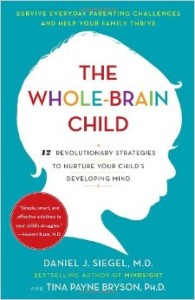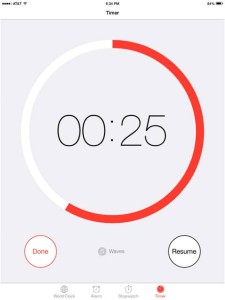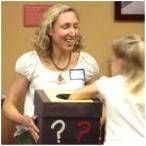 This week I am writing about a great audio book I just finished called whole brain child: 12 revolutionary strategies to nurture your child’s developing mind, survive everyday parenting struggles, and help your family thrive by Daniel Siegel. The book helps the reader understand the two parts of our brain labeled “emotional” and “thinking”. We learn how we can teach our children how to integrate the two parts.
This week I am writing about a great audio book I just finished called whole brain child: 12 revolutionary strategies to nurture your child’s developing mind, survive everyday parenting struggles, and help your family thrive by Daniel Siegel. The book helps the reader understand the two parts of our brain labeled “emotional” and “thinking”. We learn how we can teach our children how to integrate the two parts.
You might be thinking, how does this relate to reading? In my experiences teaching children to read, the key is motivating them to want to read. To do this I have to work on the “emotional” part – essentially my students’ drive and inherent motivation to want to read – by helping my students regulate their behaviors throughout the reading process. Simply by staying focused and keeping their bodies quiet during my instruction, my students improve reading mastery.
Here are three examples of how to do this with your child:
 1.) One big component of reading instruction and reading is sustained reading attention. This is making sure your child is focused enough to be able to learn a concept or material. One way to get your child focused on reading and not worrying so much about how long she has been reading is to use a timer. Have your older child set it for 20 minutes and then read. Use a visual timer if your child is younger. Let her set it for just ten minutes. This gives your child some control over the time. The focus becomes the material and not on, “How much longer do I have to read?”
1.) One big component of reading instruction and reading is sustained reading attention. This is making sure your child is focused enough to be able to learn a concept or material. One way to get your child focused on reading and not worrying so much about how long she has been reading is to use a timer. Have your older child set it for 20 minutes and then read. Use a visual timer if your child is younger. Let her set it for just ten minutes. This gives your child some control over the time. The focus becomes the material and not on, “How much longer do I have to read?”
2.) Another key component of reading is listening and reading comprehension, particularly when your child begins to read longer materials such as novels or chapters in textbooks. Some children find being still for long periods of time very challenging. So, a way to help regulate the “emotional” brain and bring it back to the “thinking” brain is to let your child move after ten to fifteen minute intervals depending on your child’s needs and age. This might look like doing twenty jumping jacks or some yoga-like stretches – like downward dog. The key is to break up the time, get your child moving, and then back to reading.
 3.) A third component of reading, especially when children are young or just learning to read, is remembering patterns when reading to be able to spell and read the words. You can help integrate the “emotional” brain with the “thinking” brain to make learning all the structures and rules of reading less overwhelming by creating “structures” for patterns in words. Charts which show word family patterns or sound rules can help your child learn the patterns in word that are essential to learning how to read.
3.) A third component of reading, especially when children are young or just learning to read, is remembering patterns when reading to be able to spell and read the words. You can help integrate the “emotional” brain with the “thinking” brain to make learning all the structures and rules of reading less overwhelming by creating “structures” for patterns in words. Charts which show word family patterns or sound rules can help your child learn the patterns in word that are essential to learning how to read.
By practicing these examples, your child can integrate the “emotional” part of the brain with the “thinking” part to help motivate reading and build an inherent love of reading.
What are ways you help regulate your child’s behaviors to help create a greater focus and motivation toward learning new skills?






